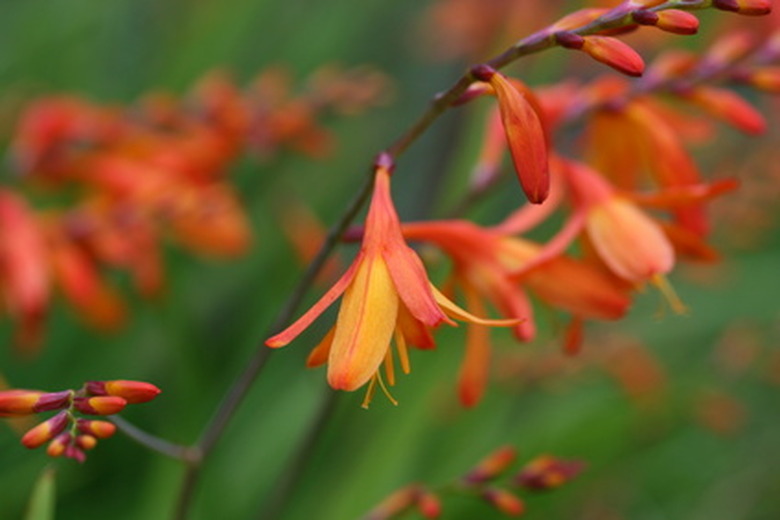How To Divide Crocosmia
Crocosmia, native to South Africa, is a big, bold plant that will send forth colorful blooms atop long, slender stems from July to late summer. Crocosmia, also known as 'Monbretia,' can be used in cut flower arrangements. Although crocosmia is a sturdy, durable plant, it will get tired and overcrowded after three or four years, and blooming will slow down or stop. When this happens, there's an easy fix. Simply divide the crocosmia into smaller plants, then plant the divided crocosmia in a new spot in your garden or share the wealth with friends.
Step 1
Divide crocosmia in spring, before new growth emerges. Be sure any danger of frost has passed. Watering the crocosmia the day before will make the plant easier to divide, and will ease the shock of transplanting the divisions.
- Crocosmia, native to South Africa, is a big, bold plant that will send forth colorful blooms atop long, slender stems from July to late summer.
- Although crocosmia is a sturdy, durable plant, it will get tired and overcrowded after three or four years, and blooming will slow down or stop.
Step 2
Dig the crocosmia with a garden fork or a spade with a flat edge. Start digging a few inches away from the plant so you don't damage the roots. Work in a circle around the plant until the roots are loosened and you can lift the crocosmia plant from the ground.
Step 3
Divide the crocosmia clumps into smaller clumps with your fingers or a knife, making sure each clump has several roots. Discard the woody, unproductive section in the center of the plant, as well as weak or spindly sections, sections with brown, soft roots, or sections with roots that don't smell good.
Step 4
Plant the divided crocosmia in a sunny, well-drained spot in your garden. The clumps should be planted at the same soil level they were planted previously. If crocosmia is planted too deeply, the crown of the plant can rot. If you're giving the crocosmia to friends, put the clumps in a cardboard box and keep them cool and moist until they can be planted.
- Dig the crocosmia with a garden fork or a spade with a flat edge.
- Divide the crocosmia clumps into smaller clumps with your fingers or a knife, making sure each clump has several roots.
Step 5
Sprinkle an all-purpose granular fertilizer around the divisions, then water the crocosmia immediately after planting. Keep the crocosmia moist throughout the growing season, but don't water excessively.
Things Needed
- Garden fork or spade with a flat edge
- Knife (optional)
- Cardboard box
- All-purpose granular fertilizer
